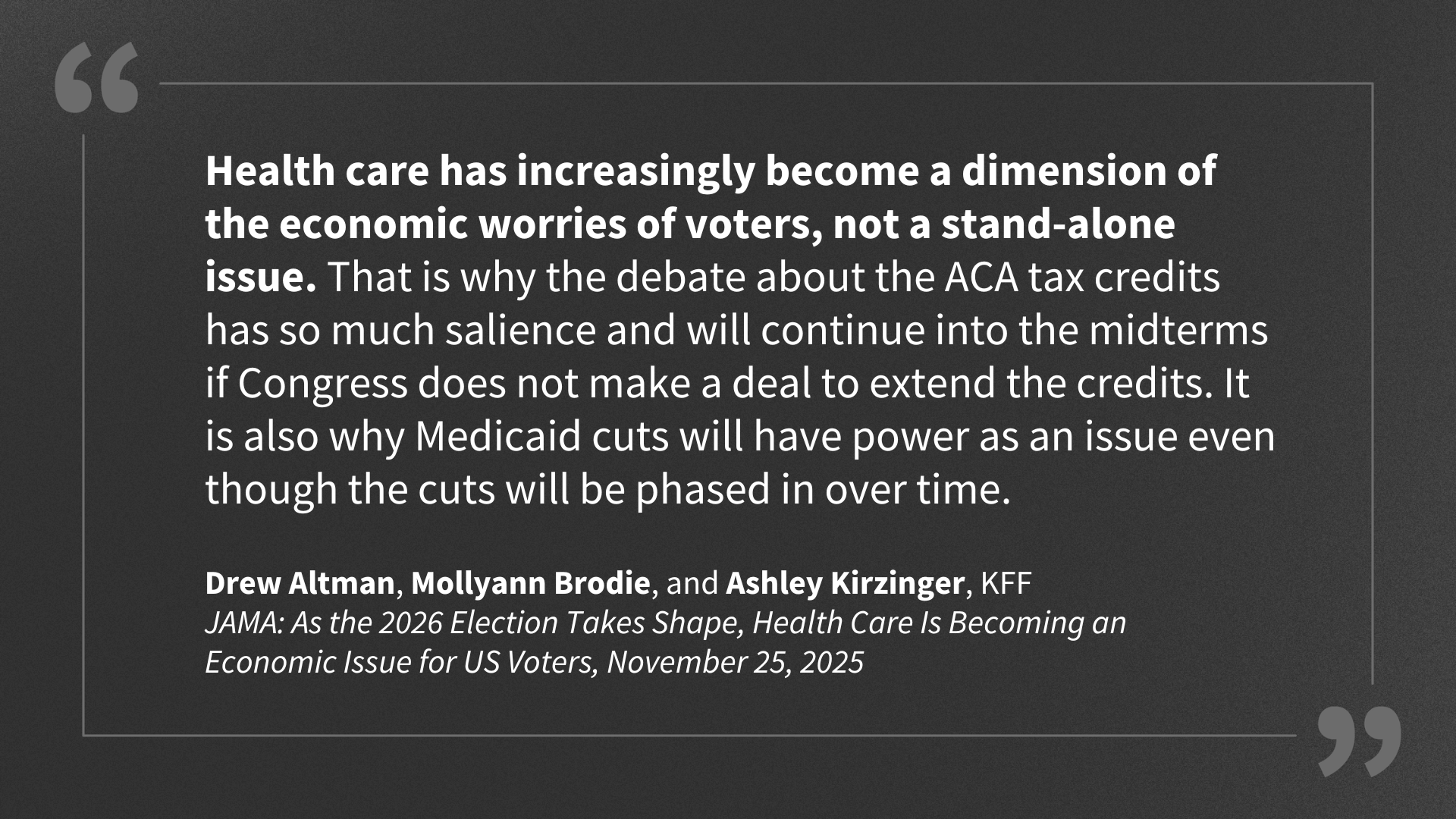The brief’s key findings are:
- When COVID hit, it sharply reduced employment rates for older workers, raising concerns that many might be forced into early retirement.
- However, accounting for population aging, employment for workers ages 55+ has fully rebounded to match pre-COVID trends.
- This return to normal, though, masks some surprising differences by demographic groups – those initially hit hardest by COVID have more than recovered.
- Specifically, Black and Hispanic individuals are working more than before COVID, while White workers and college graduates are working a bit less.
Introduction
The effect of major events on the economy is often long-lasting. For example, the Great Recession triggered a large increase in the share of older workers – defined here as those ages 55 and over – who wanted to work but had given up even looking for a job. That share did not return to normal until 2019, nearly a decade after the recession had ended.1 The COVID-19 pandemic was a very different sort of economic shock: more severe, shorter, and accompanied by a health crisis. Given that working longer is still the best way for many workers to ensure a secure retirement, the question is: how did the pandemic alter the path of older workers’ employment?
This brief addresses the question using the Current Population Survey from 2016 to 2025 – roughly four years on either side of the pandemic. The analysis will examine the picture for all older workers and then for workers with different demographic characteristics. Such an examination is worthwhile, since the shock of the pandemic looked very different in different sectors of the economy. For example, leisure and hospitality – whose workers often have less education and tend to be Black or Hispanic – experienced initial job losses followed by a surge in demand as economic stimulus took hold. White-collar industries, on the other hand, experienced less of a change in demand but saw a major shift to remote work.
The brief proceeds as follows. The first section provides background on what is known about COVID’s impact on the labor market for older workers. The second section analyzes how that labor market has evolved since the pandemic for all older workers while the third section focuses on demographic subgroups. The final section concludes that accounting for the aging of the 55+ population, the overall employment rate of older workers is back to its pre-pandemic level. But this return to normal masks interesting differences across demographic groups. Those most affected by the early stages of the pandemic – especially Black and Hispanic individuals – are working more than prior to COVID. The reverse is true for many other groups, especially workers ages 70+. As Social Security’s looming financial shortfall makes the topic of working longer more salient, a better understanding of these changes – and how likely they are to be permanent – is important.
Background
In the direct lead-up to the pandemic, employment of older workers appeared relatively static. For example, in the five preceding years, the share of these workers employed hovered just below 40 percent.2 The onset of the pandemic brought drastic changes and an array of research on older workers. Studies on the early stages of the pandemic pointed to sharp increases in employment exit generally and retirement specifically.3 Those remaining in the labor force experienced large increases in unemployment, especially in the very early months of the pandemic.4 In general, all of these impacts were larger for those with less education and Black and Hispanic individuals.5 Bucking this trend, those with disabilities actually saw employment increase to decades-long highs, as the increased availability of remote work removed some barriers to employment.6
But despite this initial research focus, older workers’ recovery from the pandemic has received somewhat less attention. Perhaps the most relevant recent study found that the share of the U.S. population identifying as retired returned to its pre-pandemic trend as early as 2023.7 But, retirement is only one reason for not working. Other researchers have found that employment remained below pre-pandemic levels for at least some groups of older workers, contradicting a return to normalcy.8 Given the lack of agreement on the persistence of any COVID employment effect and the fact that any recovery may differ across groups in unexplored ways, the next section looks to the data.
The Overall Trend
To examine how the likelihood of an individual being employed has changed following COVID, this brief uses the monthly Current Population Survey, restricting the sample to those ages 55+.9 The analysis proceeds in three steps. First, a regression is run with employment as the dependent variable using data from the period prior to the pandemic. This regression includes important determinants of employment like the individual’s age, education, race/ethnicity, gender, and self-reported health status (defined as having a physical or cognitive difficulty). Next, this regression is used to predict the likelihood that people in the post-COVID period would have worked if they acted just like people who were otherwise similar prior to the pandemic. Finally, this prediction is compared to what actually happened. The exercise asks: are otherwise similar people now working more or less than expected based on the years preceding the pandemic?
Table 1 makes it clear why such an approach is needed. Most importantly, since 2016, the population of those ages 55+ has increased in age by one and a half years. As people age, they are less likely to work, all else equal. So, failure to account for this aging could make it appear that employment has dropped due to the pandemic when the story is really a simple aging of the population. On the other hand, the older population is also more educated, and more educated people tend to work longer. Ignoring increasing education could make it look like the post-COVID period caused more work, when really the population was just more educated.
Figure 1 plots the predicted employment share (dashed gray line) and the actual one (red line). The predicted line shows how employment would have been expected to gradually decline as the population of those ages 55+ changed over time. Instead, due to the pandemic, a sharp decline occurred in Q2 2020, when the actual line fell 10.2 percent below the predicted level (34.1 percent versus 37.9 percent). However, the figure also shows how the actual line gradually returned to normal by late 2022. Today, the actual employment rate almost perfectly matches the predicted one, suggesting that, apples-to-apples, older workers are employed as often as before the pandemic.
OK, so the overall picture is of a return to normal. But the prior research on the pandemic and older workers suggested considerable variability in the pandemic’s initial impact across different demographic groups. Does that variability exist for the recovery?
Analysis by Subgroup
To analyze the post-pandemic recovery in more depth, the same predictions were used within groups defined by key demographic characteristics. Figure 2 shows the results of this exercise. To offer both the direction and relative magnitude of the change, results are presented as the percentage difference between the actual and predicted employment rate for the group in question.
Some of the results are as expected. Perhaps the easiest one to explain is the significant increase in the probability of employment for those who self-report experiencing any physical or cognitive difficulty – a nearly 25-percent higher value than predicted based on pre-COVID data. After all, these individuals are most likely to benefit from the increase in the availability of remote work that has persisted after the pandemic.10 The fact that individuals ages 70+ are much less likely to work – a 12.9-percent lower value than predicted – also makes sense given that any remaining COVID-19 health concerns are likely to be greater for this population. Plus, this group of older workers may have been especially affected by the growth in real asset values that has occurred since the pandemic, allowing them to remain retired.11
What may be somewhat unexpected is that the groups most negatively affected by the initial stages of the pandemic have seen their employment recover and then some. Indeed, Black and Hispanic individuals are significantly more likely to work relative to the predictions. On the other hand, those with a college degree and White workers are less likely to be employed despite being less impacted by the initial phase of the pandemic.
For Black and Hispanic workers, the result seems to be driven by two related facts. The first is a tight labor market characterized by fast wage growth and high rates of job openings in two industries – leisure & hospitality and trade & transportation – that disproportionately employ workers from the bottom half of the wage distribution.12 The second fact relates to retirement behavior among these groups – Black and Hispanic workers have shifted towards behavior indicative of longer careers.
To illustrate this fact, Figure 3 adjusts the prediction exercise above from one looking at current employment to changes in labor force status over time. Specifically, Figure 3 exploits the longitudinal aspect of the CPS to examine: 1) the odds that someone is retired one year after working; or 2) the odds that someone is working one year after being retired (i.e., unretired). Like Figures 1 and 2, Figure 3 predicts unretirement and retirement based on the same demographic factors.13 Because the longitudinal sample is considerably smaller and retirement and unretirement are inherently noisy behaviors, Figure 3 looks at the average for the entire post-COVID period. Relative to predictions based on pre-COVID data, Black workers have significantly lower rates of retirement post-pandemic – a sizable 12.4-percent lower value. And, both Black and Hispanic retirees have higher rates of unretirement. Black workers were 11.0 percent more likely to unretire and Hispanic workers 30.6 percent more likely. No such pattern exists for White workers, who are in fact much less likely to unretire than prior to COVID (although not shown, the pattern is similar for college-educated workers).
What is interesting about Figure 3 is that labor market conditions were not exactly bad in the post-COVID period for White workers either. Although not as buoyant as for Black and Hispanic workers, unemployment rates for White individuals were unusually low and job opening rates unusually high. Yet, retirement behavior is quite different. Future research should explore why these discrepancies exist. Are Black and Hispanic workers extending their careers for positive reasons, i.e., the good labor market and a desire to continue work? Or, do Black and Hispanic workers want to retire at the same rates as their White counterparts, but are financially unable to do so?
Conclusion
When the economy shut down in April 2020, the employment of older workers dropped dramatically. This decline sparked concern from policymakers that many older workers would be forced into early retirement. This fear was aggravated by the fact that the impact of recessions can often be long-lasting. Nearly a decade after the Great Recession, many older workers still found themselves discouraged from looking for employment despite the desire to work.
The results here suggest that this unhappy outcome has not occurred. Once adjusting for demographic changes, the employment of older workers has returned to its pre-COVID level. However, interesting variations exist around this return to normal. Those most affected by the initial phase of the pandemic seem to have recovered and then some. Conversely, White workers and the more educated are less likely to work than prior to the pandemic, even accounting for aging. Future research should consider why these different patterns are occurring, given that all workers have faced a tight labor market in the post-pandemic years. It will also be important to consider what would happen to older workers’ employment should the tight labor market that has followed the pandemic come to an end.
References
Coile, Courtney and Haiyi Zhang. 2022. “Recessions and Retirement: New Evidence from the COVID-19 Pandemic.” PRC Working Paper 2022-20. Philadelphia, PA: Pension Research Council.
Bedu Kyle, and Craig Copeland. 2024. “Trends in Labor Force Participation and Employment of Americans Ages 55 or Older.” Washington, DC: Employee Benefit Research Institute.
Carroll, Daniel R. and Christopher J. Walker. 2025. “Compression in the Wage Distribution During the Post-Covid-19 Labor Market.” Economic Commentary 2025-06. Cleveland, OH: Federal Reserve Bank of Cleveland.
Couch, Kenneth, Robert Fairlie, and Huanan Xu. 2020. “Early Evidence of the Impacts of COVID-19 on Minority Unemployment.” Journal of Public Economics 192.
Davis, Owen F., Laura D. Quinby, Matthew S. Rutledge, and Gal Wettstein. 2023. “How Did COVID-19 Affect the Labor Force Participation of Older Workers in the First Year of the Pandemic?” Journal of Pension Economics and Finance 22(4): 509-523.
Faria-e-Castro, Miguel. 2022. “Asset Returns and Labor Force Participation During COVID-19.” Economic Synopses (1). St. Louis, MO: Federal Reserve Bank of St. Louis.
Faria-e-Castro, Miguel, Serdar Birinci, Kurt See and Gus Gerlach. 2025. “U.S. Retirement Normalization following the COVID-19 Pandemic.” St. Louis Fed On the Economy. St. Louis, MO: Federal Reserve Bank of St. Louis.
Federal Reserve Bank of Atlanta. 2025. “Labor Force Participation Dynamics.” Available at: Federal Reserve Bank of Atlanta; https://www.atlantafed.org/chcs/labor-force-participation-dynamics, August 4, 2025.
IPUMS USA. 2016-2025. IPUMS CPS: Version 12.0 [dataset]. Minneapolis, MN: University of Minnesota. Available at: www.ipums.org.
Kaplan, Robert S., Tyler Atkinson, Jim Dolmas, Marc P. Giannoni, and Karel Mertens. 2021. “The Labor Market May Be Tighter than the Level of Employment Suggests.” Research and Analysis of Economic Trends and Developments. Dallas, TX: Federal Reserve Bank of Dallas.
Kessler Foundation. 2022. “June 2022 Jobs Report: Employment Reaches All-time High for People with Disabilities.” National Trends in Disability Employment Report. East Hanover, NJ: Kessler Foundation.
Kim, Chang Hwan and Christopher R. Tamborini. 2022. “Employment Transitions Among Older Americans During the Initial Lockdown and Early Reopening Months of the COVID-19 Recession.” Social Security Bulletin 82(4).
Lee, Sang, Minsung Park, and Yongseok Shin. 2021. “Hit Harder, Recover Slower? Unequal Employment Effects of the COVID-19 Shock.” Federal Reserve Bank of St. Louis 103(4).
Liu, Siyan and Laura D. Quinby. 2024. “Has Remote Work Improved Employment Outcomes for Older People with Disabilities?” Working Paper 2024-12. Chestnut Hill, MA: Center for Retirement Research at Boston College.
Montes, Joshua, Christopher L. Smith, and Juliana Dajon. 2022. “‘The Great Retirement Boom’: The Pandemic-Era Surge in Retirements and Implications for Future Labor Force Participation.” Finance and Economics Discussion Series, no. 2022-081(November): 1-33.
U.S. Bureau of Labor Statistics. 2025. “Labor Force Participation Rate: 55 Years and Over.” Available at Federal Reserve Bank of St. Louis; https://fred.stlouisfed.org/series/LNS11324230, July 19, 2025.
Endnotes
Publisher: Source link









